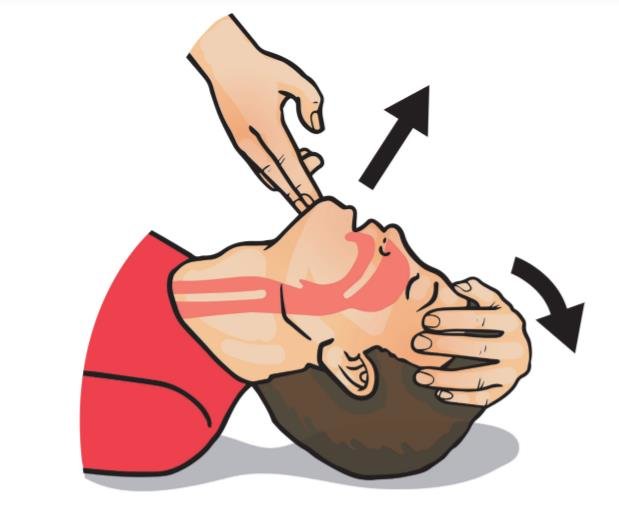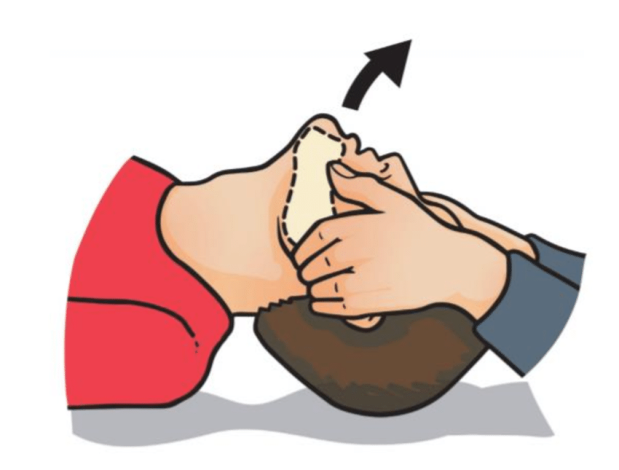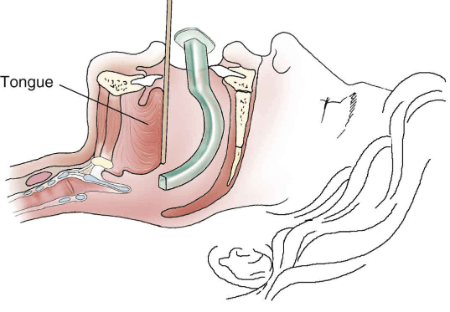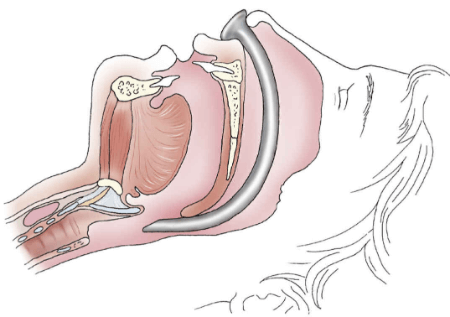3.3 A – Airway
Opening the Airway
Before providing rescue breaths or assessing for normal breathing, the airway must be opened. An obstructed or improperly positioned airway can prevent effective ventilation. Use the appropriate airway maneuver based on the situation and suspected injuries.
Head-Tilt/Chin-Lift
The head-tilt/chin-lift is the standard method for opening the airway when there is no suspected spinal trauma.
Head-Tilt/Chin-Lift Technique
×
Head-Tilt/Chin-Lift Technique
 © FAW Training Solutions – All rights reserved
© FAW Training Solutions – All rights reserved

- Place one hand on the victim’s forehead and apply firm backward pressure to tilt the head.
- Use the fingers of your other hand under the bony part of the lower jaw to lift the chin upward.
- Do not press deeply into the soft tissue under the chin to avoid obstructing the airway.
Jaw-Thrust Maneuver (Suspected Trauma)
When spinal injury is suspected, use the jaw-thrust maneuver without head extension to open the airway.
Jaw-Thrust Maneuver
×
Jaw-Thrust Maneuver
 © FAW Training Solutions – All rights reserved
© FAW Training Solutions – All rights reserved

- Position yourself at the top of the victim’s head.
- Place both hands on either side of the victim’s head, resting your elbows on the surface.
- Grasp the angles of the lower jaw and lift with both hands to displace the jaw forward.
- If the airway cannot be opened this way, carefully switch to a head-tilt/chin-lift while minimizing spinal movement.
Check for Airway Obstruction
Look for visible obstructions in the mouth or upper airway, especially in unconscious victims. If something is visible and easily reachable, carefully remove it. Do not perform a blind finger sweep.
Airway Adjuncts (Healthcare Providers Only)
Oropharyngeal Airway (OPA)
×
Oropharyngeal Airway (OPA)
 © FAW Training Solutions – All rights reserved
© FAW Training Solutions – All rights reserved

The oropharyngeal airway (OPA) is used in unresponsive patients without a gag reflex. It keeps the tongue from obstructing the airway and is typically inserted with a 180-degree rotation once past the tongue.
- Use only in unconscious patients without an intact gag reflex
- Select the correct size based on the distance from the corner of the mouth to the earlobe
- Insert using proper technique to avoid trauma to soft tissues
Nasopharyngeal Airway (NPA)
×
Nasopharyngeal Airway (NPA)
 © FAW Training Solutions – All rights reserved
© FAW Training Solutions – All rights reserved

The nasopharyngeal airway (NPA) can be used in patients with a gag reflex or suspected oral trauma. It is inserted through the nostril and provides an open airway without triggering the gag response.
- Use when the OPA is contraindicated (e.g., gag reflex present or oral trauma suspected)
- Choose the correct size based on nostril diameter and measure from nostril to earlobe
- Lubricate before insertion and insert gently, following the nasal floor
Both OPA and NPA devices require proper sizing and insertion technique. Use only if trained and authorized.